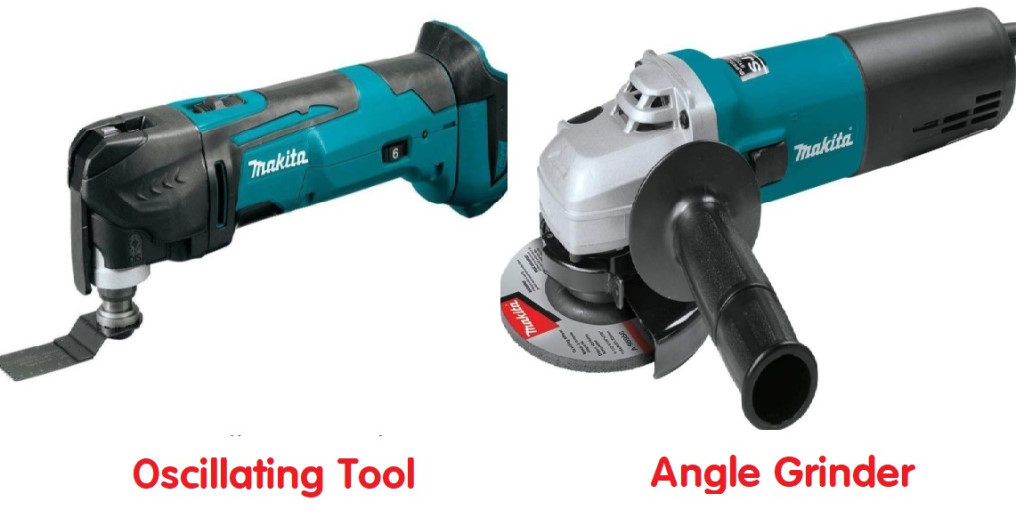In many construction sites or workshops, the choice between an angle grinder and an oscillating tool tends to come up, especially for precise grinding in difficult locations.
Therefore, our article will focus on angle grinder vs oscillating tool to clear up your confusion and help you in determining which option is better for your needs.
Contents
Angle Grinder Vs Oscillating Tool: An Overview
Angle grinders
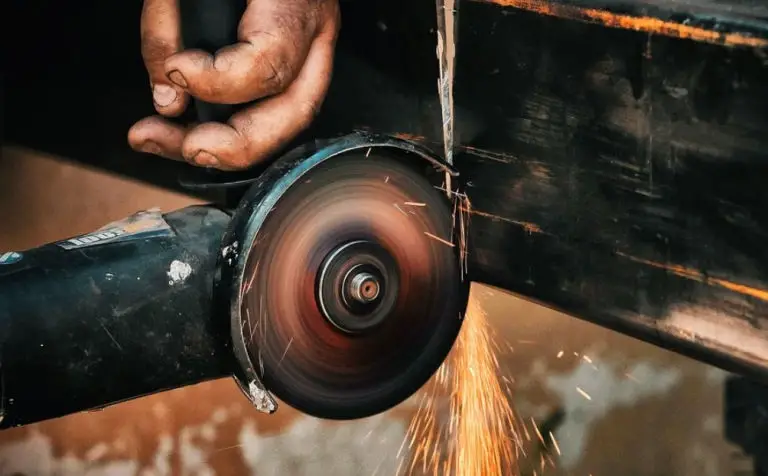
They are powerful tools with a spinning wheel that can be used for a variety of tasks. These wheels are replaceable and have variable sharpness.
Different attachments can serve different purposes, including polishing, cutting, and sanding, etc. Moreover, the blade angle of an angle grinder to its driveshaft is acute.
Equipped with a powerful motor, angle grinders allow you to effortlessly handle tough materials. The tools require both hands to operate smoothly.
Jobs that angle grinders are capable of performing with precision and excellence include paint removal, rust removal, tile cutting, mortar removal, stone cutting, metal polishing, and tool sharpening. They can also be utilized for a variety of construction and fabrication operations.
Oscillating tools
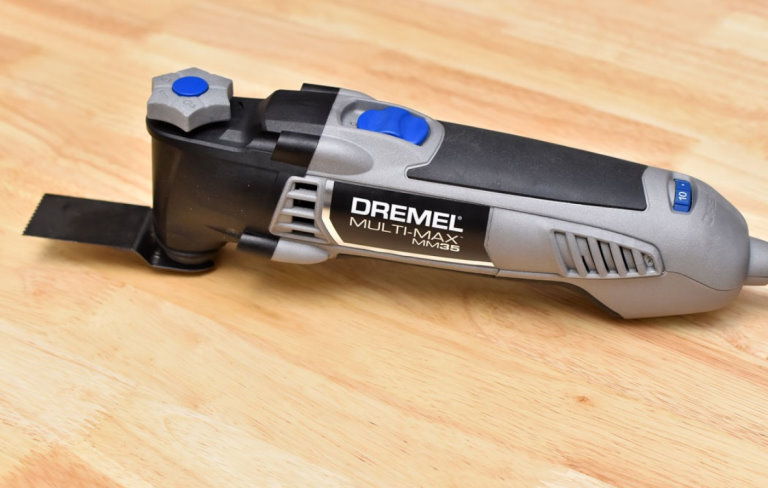
These power tools can also be used for various tasks and similar to angle grinders, they also have a wide range of attachments.
A high-performance motor is also found in oscillating tools. Their head is positioned perpendicular to the ground, providing them with the needed torque for high-performance jobs.
The oscillating tools are likely to be compact, which allows you to operate them with one hand.
Ideal tasks for oscillating tools are trim and baseboard cutting, undercutting, preparing walls before painting, cutting flush, repairing windows, removing grout, laying down thin planks on floors, and installing or adjusting cabinets.
Differences Between Angle Grinders And Oscillating Tools
The choice of an angle grinder vs oscillating tool may be determined by the following differences between them.
Type of blade
Angle grinders and oscillation tools each feature a variety of attachments that can be used for many tasks. Each job requires the use of a distinct blade.
On the one hand, an oscillating tool can be attached to a straight blade, scraping tools, sanding pads, or toothed blades.
Angle grinder attachments, on the other hand, are unique and come in various sharpness levels, including grinding wheels, cutting blades, sanding pads, etc.
However, the two tools’ attachments cannot be used interchangeably.
Maneuverability
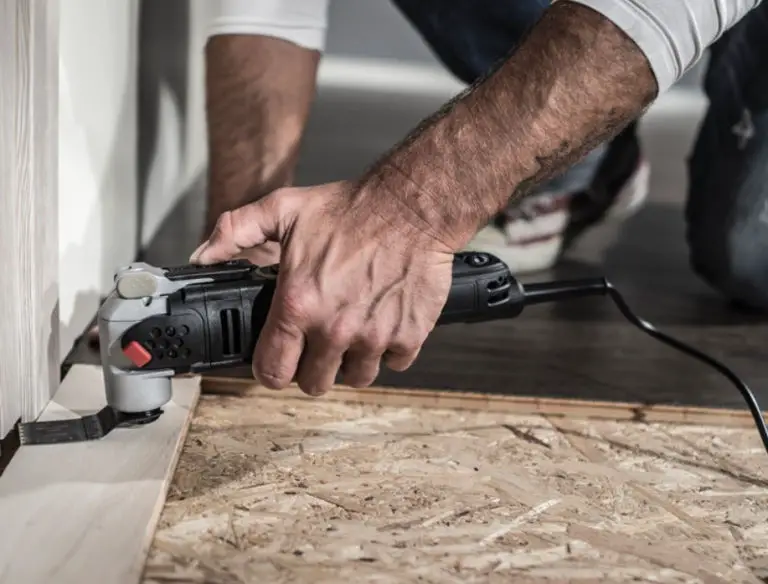
Oscillating tools are more maneuverable than angle grinders. The former have narrow blades and attachments that may be put into tight areas and used to cut objects.
Nevertheless, angle grinders are still easy to handle. However, their attachments are often larger, making them harder to utilize in tight locations. Moreover, since grinder blades’ proclivity for throwing debris, their attachments are mainly used in the open.
Consider oscillating tools as lighter alternatives that can be operated with just one strong hand. On the contrary, angle grinders usually require both hands for operation and a moderate amount of pressure.
Safety
Both of these power tools pose less risk than a circle/table saw.
Specifically, operating an oscillating multi-tool does not necessitate the use of any safety equipment or processes. Unless you are cutting rusted metals, they operate cleanly and don’t throw a lot of debris away.
Angle grinders, on the other hand, require the use of protective clothing and equipment, including snug-fitting clothing and full PPE. In addition, they generate a great deal of debris and even sparks, which can cause you injuries.
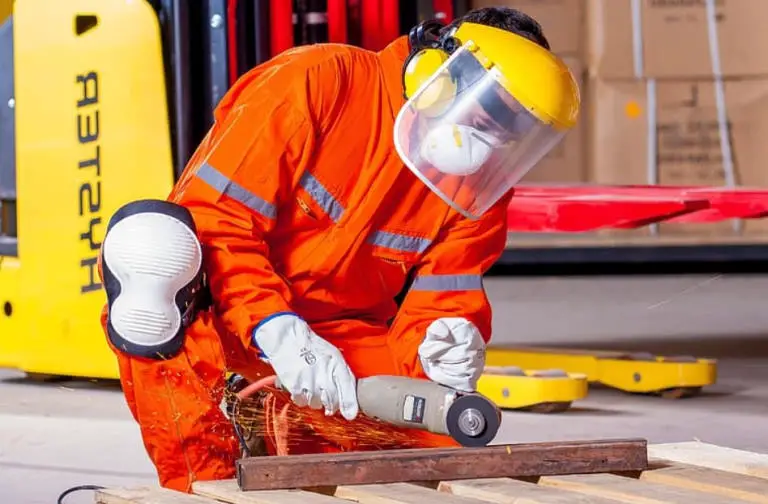
Price
Grinders are more expensive than oscillating tools.
The latter can be purchased for $100, with their higher-end ones costing between $250 and $300.
By contrast, an angle grinder can cost between $120 and $180 and might cost up to $500. Keep in mind that its attachments increase the overall price.
Maintenance
Multi-purpose power tools with more attachments are associated with more difficulties and higher prices in maintenance. When you have to decide between angle grinders and oscillating tools, this is an important aspect to take into consideration.
In this aspect, oscillating tools require more maintenance because of more attachments.
Which Tool Should You Use?
Now comes the main question: Which tool should you choose, angle grinders or oscillating tools? The answer depends on your priority.
The simplest approach to figure this out is to think about the kinds of construction projects you do. Angle grinders are ideal if your tasks involve cutting, sanding, polishing, or scraping a lot of materials with precision and finesse. However, if you need to work in tight places, oscillating tools are the way to go.
In addition, if you need something powerful to cut through a variety of materials, an angle grinder is a perfect choice. It’s also lightweight and does not have a lot of attachments. On the contrary, an oscillating tool may be difficult to carry due to its numerous attachments.
Moreover, if you’re looking for a new power tool that is a little bit more affordable, buy an oscillating tool. These devices are frequently less expensive to purchase and maintain in terms of accessories. Their life span may be shorter than angle grinders’, but they are also quite inexpensive to replace.
Final Words
If you have ever been confused between an angle grinder and an oscillating tool, you are not alone. However, now that you have read our guide and in-depth comparison, you should be able to tell their differences.
And hopefully, with the newly acquired knowledge, you can choose the best multi-purpose tool for your jobs.
